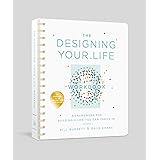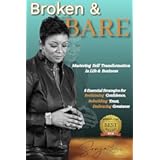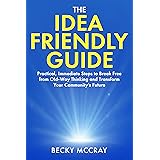Are you tired of endlessly clicking “apply” on job boards, only to be met with silence? If your current job search strategy feels like shouting into a void, you’re not alone. The video above offers a fresh perspective on how we’re *actually* getting jobs in 2025, moving beyond the traditional, often soul-crushing, process of mass applications. It highlights a proactive, targeted approach that leverages professional networking and direct engagement.
In today’s competitive landscape, simply submitting your resume online can feel like dropping a message in a bottle into a vast ocean. Many job seekers report applying to hundreds of positions with little to no response. The key to successful job hunting lies in making genuine connections and demonstrating your value directly to decision-makers. Let’s delve deeper into this powerful method for landing your next role.
Rethinking Your Job Search Strategy for 2025
The first step in any effective job search is clarity. Just as a sailor needs a destination before setting sail, you need a clear vision of your ideal role. This isn’t just about finding *a* job; it’s about finding the *right* job that aligns with your skills, passions, and career aspirations. The more specific you are, the easier it becomes to target your efforts and stand out.
Defining Your Ideal Role, Location, and Industry
Before you even open LinkedIn, take time to define what you’re truly looking for. What specific job title resonates with you? Consider not just the tasks involved, but the impact you want to make. For instance, instead of just “marketing,” think “Digital Marketing Specialist focusing on content strategy in the B2B SaaS industry.”
Identifying your preferred location is also crucial. Do you want to work remotely, in a specific city, or are you open to relocation? Pinpointing the industry is equally important. Are you passionate about tech, healthcare, non-profits, or consumer goods? Getting crystal clear on these parameters—role, location, and industry—acts like a compass, guiding your entire job search journey and making your outreach messages much more potent.
Leveraging LinkedIn for Effective Job Search
LinkedIn is far more than just a place to upload your resume; it’s a dynamic professional ecosystem. The video correctly emphasizes that its power lies not just in its job board, but in its networking capabilities. Think of LinkedIn as a vast professional conference, where you can walk up to anyone, introduce yourself, and start a conversation—if you know how to do it effectively.
Finding Your Foot in the Door: Identifying Key Contacts
Once you have your ideal job definition, head to LinkedIn. Search for that specific role and filter by your experience level. Don’t worry if you don’t meet every single criterion listed; job descriptions often describe the ideal candidate, not necessarily the only one. Focus on recent postings, as these indicate active hiring.
For each promising job, your mission is to find the hiring manager or someone else who works in that department or on that team. This might be a director, a team lead, or even a peer. These individuals are your direct link to understanding the role’s needs and showing how you can contribute. Locating these key contacts is like finding the backstage pass to a show, allowing you to bypass the general admission line.
Crafting Outreach Messages That Resonate with Hiring Managers
This is where many job seekers stumble. A vague “can I pick your brain?” message is often ignored because it doesn’t offer clear value or purpose. The video highlights the importance of being direct, purposeful, and concise. Your message should be a compelling mini-pitch, not a demand for their time.
Essential Components of a Powerful Outreach Message
Your outreach message needs to be a brief, impactful introduction. It’s like a well-crafted elevator pitch for yourself. Start by introducing who you are and state why you’re reaching out—specifically referencing the role or company. Clearly articulate your interest in the role and, crucially, why you are a perfect fit. This isn’t just about listing skills; it’s about connecting your unique abilities and experiences to the company’s specific needs and culture. For example, if the company values innovation, share an example of how you’ve driven innovation in a past role.
Consider the hiring manager as a busy conductor managing a complex orchestra. Your message needs to cut through the noise with a clear, harmonious tune. Emphasize how your particular instrument (your skills) will enhance their current composition (their team’s goals). Focus on the value you can bring, rather than just what you want from them.
The Strategic Advantage of Suggesting Specific Times
A common mistake is leaving the ball entirely in their court by asking “When are you free?” This adds an extra cognitive load for the recipient. Instead, offer specific, concise time slots. For example: “I’m available for a brief 15-minute chat next Tuesday at 10 AM EST or Wednesday at 2 PM EST. Would either of those times work for you?”
Providing concrete options demonstrates respect for their time and makes it incredibly easy for them to respond with a simple “yes” or “no,” or to suggest an alternative. It’s like offering them a pre-packaged meal instead of handing them all the ingredients and asking them to cook. This small detail significantly increases your chances of getting a response and moving forward in your job search.
Consistent Action: Your Weekly Networking Blueprint
Consistency is paramount in any successful endeavor, and your job search is no exception. It’s not about making a massive, one-time effort, but about sustained, manageable actions. The video suggests setting alerts and reaching out to 10 new people every week, and this structured approach can dramatically shift your outcomes.
Setting Alerts and Goals for Your Targeted Job Hunting
LinkedIn’s job alert feature is your digital assistant. Set up alerts for the specific roles and industries you identified earlier. Check these alerts weekly to find new opportunities that fit your criteria. This ensures you’re always on top of the latest openings without constantly scouring the platform manually.
Making the “10 Connections Per Week” Goal Achievable
The idea of reaching out to 10 new people every week might sound daunting, but it’s a powerful metric. Break it down: that’s just two targeted outreach messages per workday. This consistent effort, like tending a garden regularly, yields far better results than sporadic bursts of activity. Over time, these individual connections build into a robust professional network, opening doors that traditional applications never could.
Each outreach is an opportunity to learn, to make an impression, and to potentially bypass the automated screening processes. It’s an investment in your career strategy that pays dividends far beyond the immediate job opening. Think of it as planting seeds; not all will grow, but a consistent effort ensures a bountiful harvest over time.
Why Direct Engagement Outperforms Mass Job Applications
The video’s core message is clear: “cold applying” to hundreds of jobs is often a futile exercise. When you apply through a portal, your resume often enters a black hole, processed by Applicant Tracking Systems (ATS) that may filter you out before a human ever sees your qualifications. This is like trying to win a lottery with millions of tickets; your chances are minuscule.
Direct engagement, on the other hand, is like getting a personal recommendation. When you reach out to a hiring manager, you bypass the initial screening filters and present yourself directly. This personal touch demonstrates initiative, genuine interest, and strong communication skills—qualities highly valued by employers. It’s a proactive approach to getting a job that gives you control and significantly higher odds of success.









